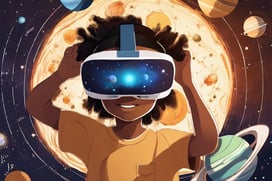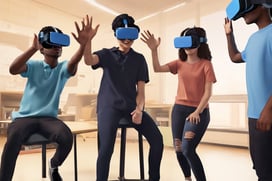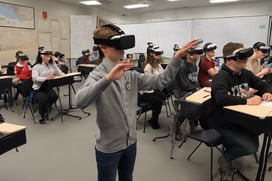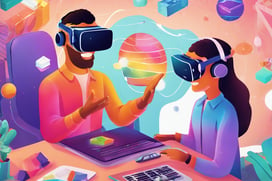Revolutionizing Education Through Virtual Reality
EDUCATIONFEATURED
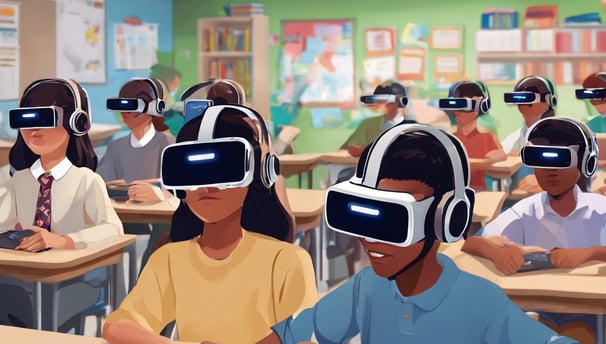

Students wearing VR headsets, immersed in a virtual learning environment.
Virtual Reality (VR) is reshaping the landscape of education by providing an immersive and interactive learning experience for students of all ages. With VR technology, students can explore three-dimensional environments that bring learning to life in ways never before possible.
One of the most compelling applications of VR in education is evident in apps like "Titans of Space," which takes students on a virtual tour of the planets and the solar system. Through this interactive experience, students can visualize complex concepts and gain a deeper understanding of astronomical phenomena.
The benefits of integrating VR into education are manifold. Firstly, VR minimizes distractions, creating an immersive learning environment where students can focus solely on the educational content at hand. This heightened engagement leads to better retention of information and improved learning outcomes.
Moreover, VR offers practical training opportunities that are otherwise difficult or costly to replicate in the real world. Whether it's exploring ancient civilizations, conducting virtual science experiments, or practicing surgical procedures, VR enables students to gain hands-on experience in a safe and controlled environment.
In addition to practical training, VR fosters creativity in the classroom by providing educators with innovative tools to deliver engaging lessons. By incorporating interactive elements and gamification, educators can captivate students' attention and make learning more enjoyable and memorable.
In conclusion, Virtual Reality has emerged as a game-changer in education, offering endless possibilities for immersive learning experiences. As VR technology continues to evolve, its integration into classrooms worldwide promises to revolutionize the way we teach and learn, paving the way for a more interactive, engaging, and effective educational experience.

